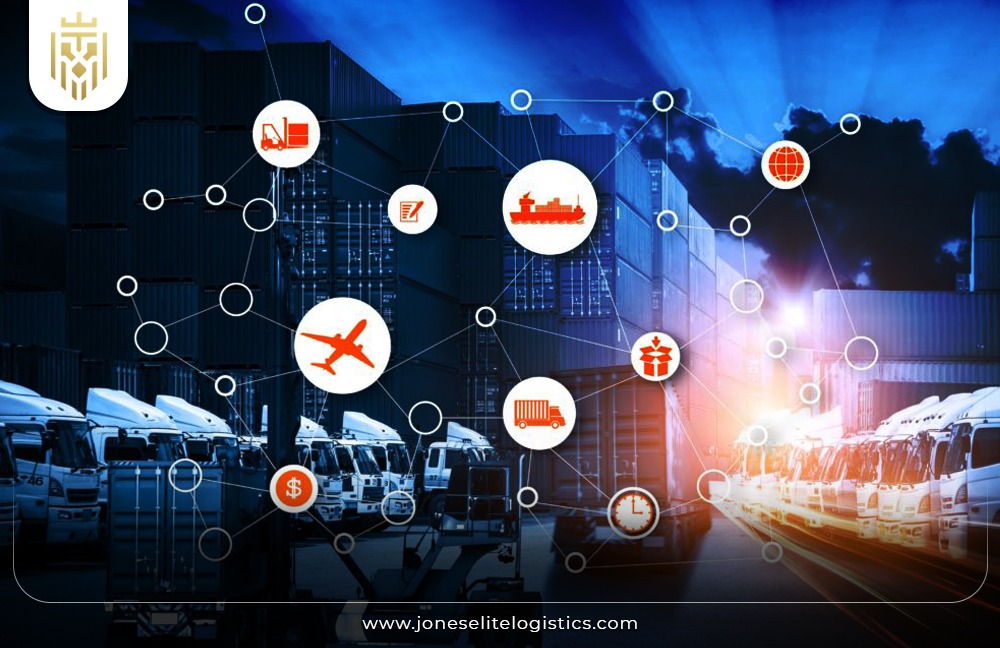What is Supply Chain Integration:
Supply chain integration is the process of synchronizing and coordinating activities within the overall supply chain management, from the suppliers of raw materials to the final consumers. It integrates people and processes across all these parties, bringing more visibility, better collaboration, and communication, which ultimately makes the supply chain more efficient and responsive. The intention is to create a pipeline where the organizations will be able to operate smoothly having removed redundancies and improved performance through sharing of information, standardizing of the processes, and better use of resources.

Types of Integrated Supply Chain Management:
Integrated supply chain management includes horizontal integration for merging operations, vertical integration for controlling all production stages, and cross-functional integration for internal collaboration. Additionally, external integration aligns goals with suppliers and customers, enhancing overall supply chain resilience and responsiveness.
Horizontal Integration in Supply Chain:
Horizontal integration in the supply chain is the unification of actions at the same stage of the supply chain, e.g., merging with or buying competitors. It is a goal that is pursued to increase the share of business, retain competitors, and attain economies of scale. It boosts the competitiveness of companies, enables them to handle larger capacities, reduce costs, and enhance product offerings by way of sharing resources and capabilities. Horizontal integration helps in streamlining operations, leading to increased supply chain efficiency.
Vertical Integration in supply chain:
Vertical integration is a process that involves the unification of all stages of the manufacturing and distribution process within one integrated supply chain. A company could have its suppliers and distributors (backward integration) or forward integration. The purpose of this strategy is to gain more control over the supply chain, ensure better coordination, decrease the dependence on external partners, and increase the company’s profit margins. It enables manufacturers to have superior control and leads to the reduction of the time it takes to get a product out on the market.
Cross-Functional Integration in the supply chain:
Cross-functional integration is a process of collaboration and coordination between all the internal departments such as purchasing, production, marketing, and logistics. This approach enables all departments to cooperate, thereby making sure that the organization works in a manner that leads to the achievement of common objectives. The use of technology is a tool that helps information flow better, reduces silos, and improves decision-making processes, which will result in more effective and more cohesive operations. Integration technology plays a critical role in successful supply chain management.
Integration Process in Supply Chain Management:
The integration process in supply chain management involves several key steps: such as inventorying existing capabilities, developing integration goals, selecting applicable technologies, and putting standard processes into place. It is by charting the very supply chain that one can discover where to make the most useful improvements. Hereafter, enterprises design strategies for both data exchange, processes accord, and supply chain integration process. The training program and change management processes play an important role in implementing smoothly and improving it continuously.

Four Stages of Supply Chain Integration:
Supply chain integration progresses through several stages: strategic planning, tactical execution, brand visibility, and marketing management. Each stage develops the previous act to improve coordination, efficiency, and reactiveness across the chain management. Succeeding in the integration and further development process implies thorough development and continuous optimization, to have smooth working and better progress.
Planning:
The planning stage includes the strategic alignment and objectives establishment of the supply chain management process as well. For instance, the organization encompasses demand forecasting, inventory management, resource allocation, and capacity planning. Proper planning positively affects the coordination and coordination with the supply chain partners, which consequently helps in reducing disruptions and maximizes the utilization of resources. Effective supply chain integration starts with robust planning.
Execution:
In the execution stage, companies execute the plans prepared in the process of planning. It involves overseeing production processes, shipment, warehousing, and distribution tasks. Real-time domination and communication among all supply chain partners is a key factor that enables efficient performance by ensuring timely and accurate delivery of products and services. This stage emphasizes the importance of supply chain agility to respond to market changes.
Visibility:
Transparency in supply chain integration implies that data should be available in real time throughout the whole process of supply chain management. In this phase, we are going to establish a platform that shows us the current levels of inventories, the shipment statuses, or the demand forecasts. Enhanced visibility is crucial for mitigating supply chain disruptions. It enables faster decision-making, prompt response to any alteration, and effective risk management.
Management:
The management level is centred on the accomplishment of continuous monitoring and improvement in the supply chain management process. This involves, among other things, performance, supplier relationship management, and compliance with the law. Efficient supply chain management promises that the interwoven paths continue to flow freely, swiftly, and in sync with the business strategy. An effective supply chain integration strategy ensures that all supply chain participants are aligned towards common goals.

Risks and Rewards of Integrating a Supply Chain:
Integrating a supply chain imposes some risk and also creates a potential for profits. Risks involve multiple issues such as increased complexity, the possibility of data leaks, and elevated costs of implementation. On the other hand, the side benefits of these challenges beat the risks, as they offer higher efficiency, cost-effectiveness, satisfied customers, and more speedily offer what is demanded in the market. A successful supply chain integration can be an edge due to the potential rise in profitability.
Benefits of Supply Chain Management Integration:
Supply chain management integration brings about multiple advantages such as lower operational costs, improved productivity, and high customer satisfaction. Supply chain optimization is achievable through effective integration. With the coordination of various activities such as production, transportation, storage, and distribution, companies can eliminate bottlenecks, cut down on inventory levels, and increase the quality of goods.
Best Practices for Implementing an Integrated Supply Chain Model:
A model of an integrated supply chain is likely to be a success if best practices which include clear communication, stakeholder alignment, and technology adoption are put in place. Start with sufficient planning and careful goal setting. Use advanced technology like the ERP system to share real-time data. Establish close ties with suppliers and other stakeholders through coordination and information sharing. Constantly monitor and make adjustments to the strategies based on the performance metrics to enhance the ongoing effectiveness and flexibility to cope with market situations.
FAQs
1. What is supply chain integration?
Supply chain integration is the act of integrating and coordinating all elements of the supply chain, from suppliers to customers, to create a synergistic flow of materials, information, and services. This method involves data flowing, processes replicating and synchronization improving across the entire supply chain ecosystem. The purpose is to streamline and standardize the flows of commodities, information, and money, assuming to improve overall performance, reduce cost, and increase customer satisfaction.
2. What are the four stages of supply chain integration?
The four stages of supply chain integration are Planning, Execution, Visibility and Management. The four stages of supply chain integration are essential for enhancing efficiency and responsiveness. The first stage, planning, focuses on setting strategic goals, demand forecasting, and resource coordination. The second stage, execution, involves decision-making for production plans, leading production, fulfilling orders, and managing distribution. The third stage, visibility, emphasizes maintaining real-time data streams to monitor and adjust processes. Finally, the management stage entails regularly measuring and refining supply chain management performance through metrics review and strategic adaptation.
3. Why is supply chain integration important?
Supply chain integration is a must for an efficient supply chain which would lead to lower costs and better customer satisfaction. Having a common direction, companies will be able to synchronize chains’ activities, streamline their operations, cut off delays, and respond in time to market volatility. One of the key benefits of integration is that it builds better communication and teamwork among all the parties involved. This helps in accurate forecasting, management of inventory, and better relationships with suppliers. Consequently, it makes the company more competitive.







